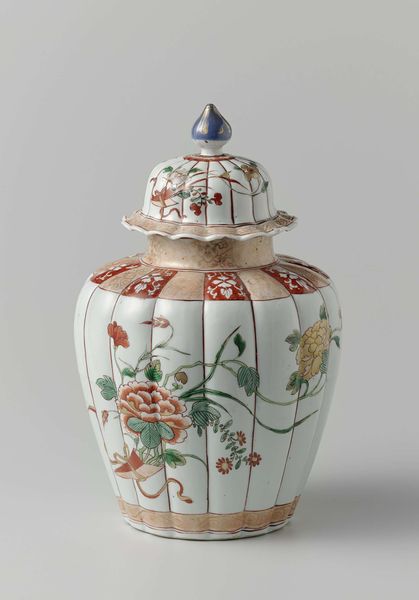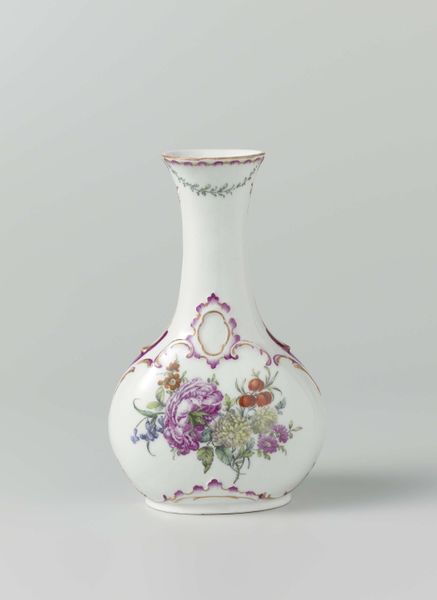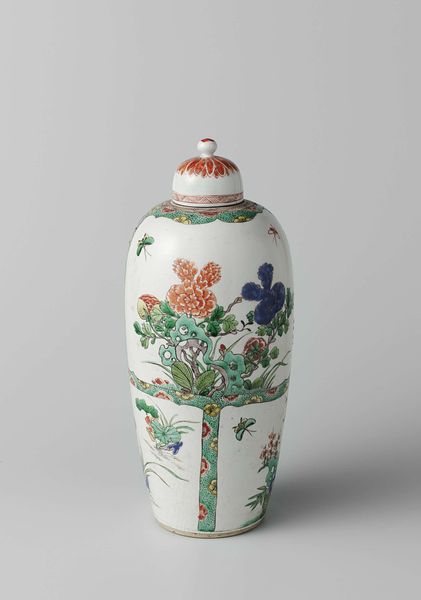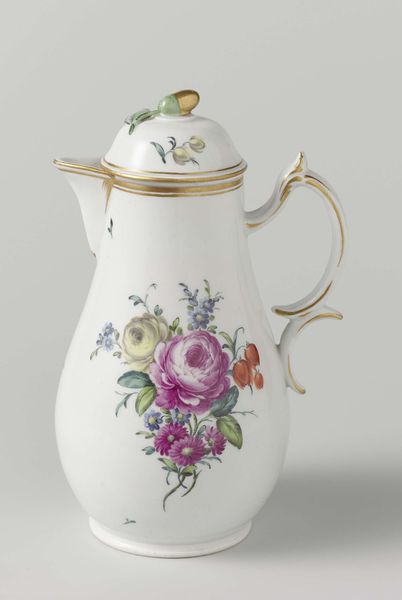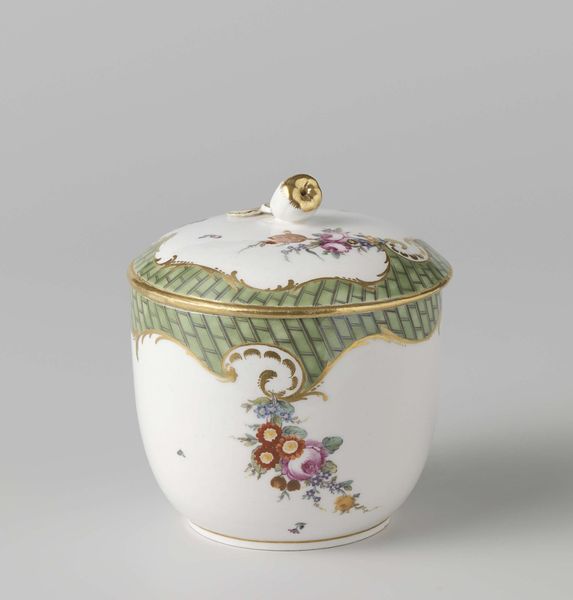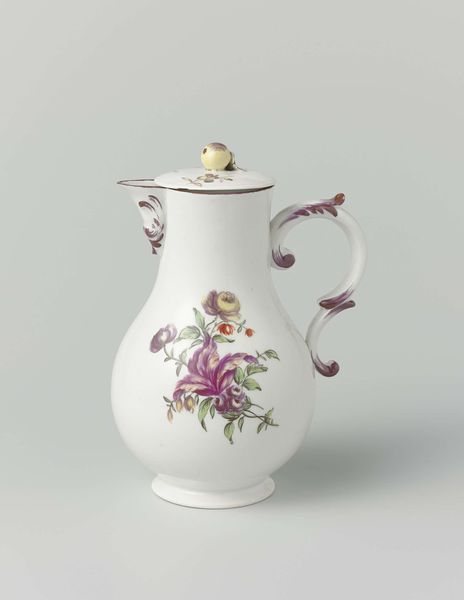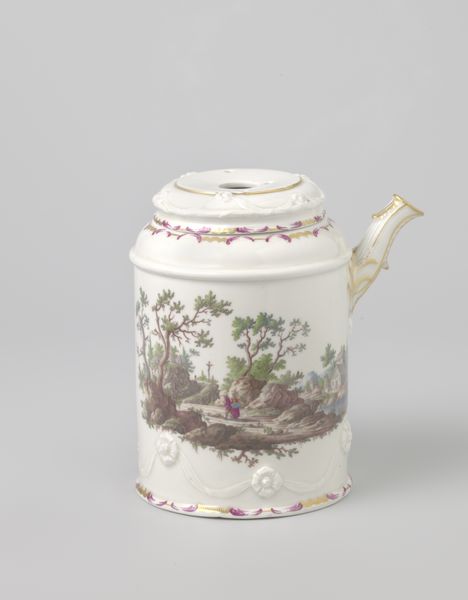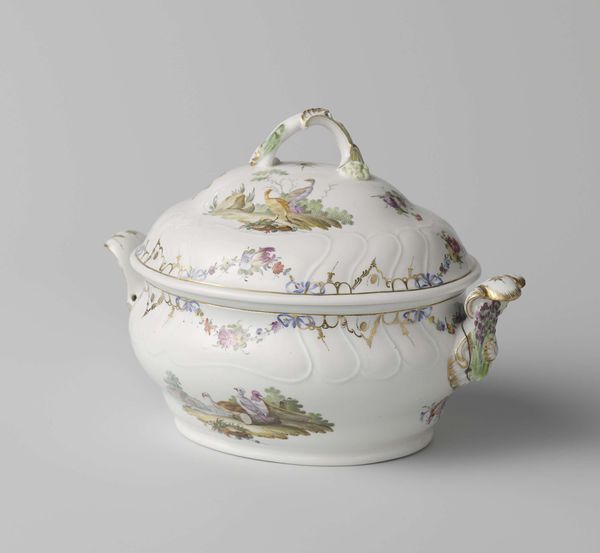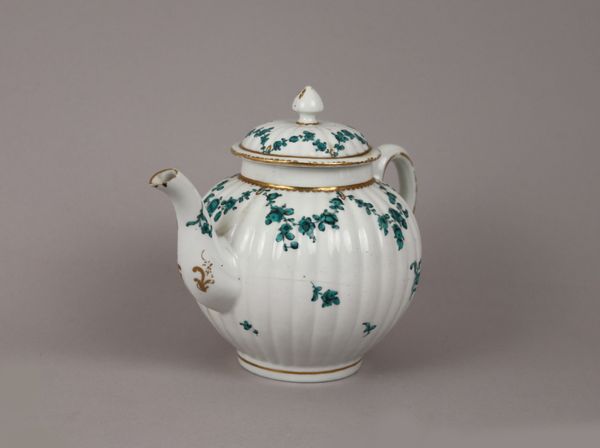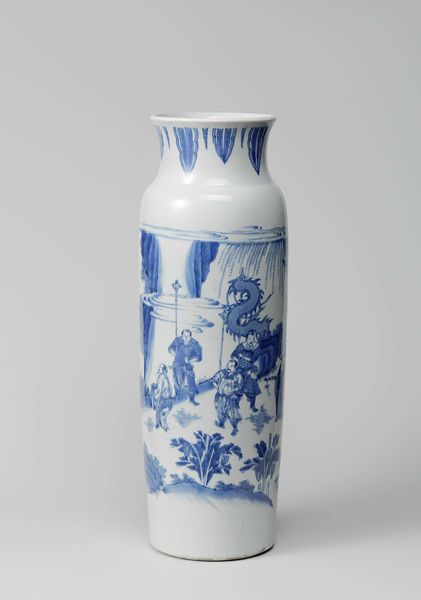
ceramic, porcelain
#
ceramic
#
porcelain
#
ceramic
#
decorative-art
#
rococo
Dimensions: height 11.1 cm, diameter 7.6 cm
Copyright: Rijks Museum: Open Domain
Curator: Well, isn't this delightful! I'm immediately drawn to the delicacy of this porcelain piece. It just whispers "spring morning" to me. Editor: This is a tea caddy made around 1759 to 1771 by the Weesper porcelain factory. What you are seeing is delicate work in ceramic porcelain typical of decorative art, and very reflective of the Rococo style of the time. Tea, by this time, was more affordable for those outside of aristocratic circles. So we do see production picking up alongside increased demands during the eighteenth century. Curator: That’s fascinating. Tell me more about this Rococo influence. I am seeing how those floral motifs are so meticulously painted... They speak volumes. It is clear how nature in its ideal state really did dictate a society's taste and aesthetics. Editor: Yes, it is representative of the rococo era. Rococo really emphasizes asymmetry, elegance and it focused more on decorative beauty than anything else. Looking closely at the tea caddy, the soft palette is echoed across related artwork created during this time. Curator: You know, the flower choices themselves strike me as carefully considered. Roses, Iris... What stories are they trying to tell with these emblems? How can an image serve as a silent communicator of feelings and values within a very specific era? Editor: Indeed! In Western iconography, Irises are linked to royalty, passion, as well as messages, they communicate the meaning of elevated status and a flair for sophistication. These associations add layers to how we perceive the tea caddy and the place of these goods and items like them. Curator: Thinking about the labor required to produce something like this in the mid-18th century gives you some pause as to who had the luxury to afford one...it suggests the growing Dutch middle class now partaking in leisurely afternoon teas. What can an everyday object like this tell us about social aspirations and the shaping of individual identities at the time? Editor: I completely agree! That understanding is paramount. This small vessel, a product of skilled hands and deliberate artistry, acts like a window into the tastes and even social-cultural aspirations that really defined a significant cultural turning point in Europe’s history. Curator: Seeing an item like this brings history into such immediate focus... a very different insight. Editor: Agreed, by understanding symbolism, and the production circumstances of art we can better understand art's impact in the society for which it was created.
